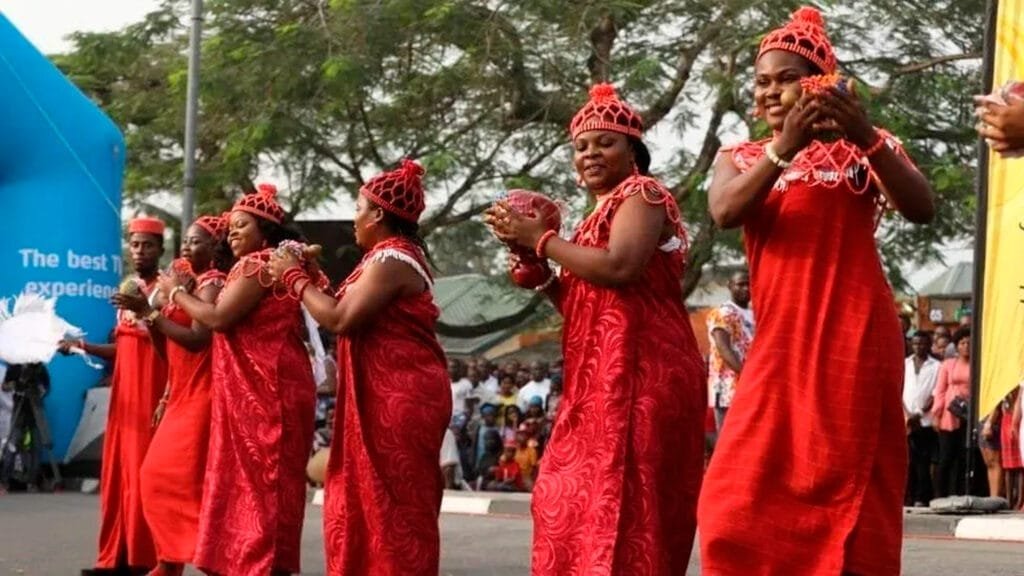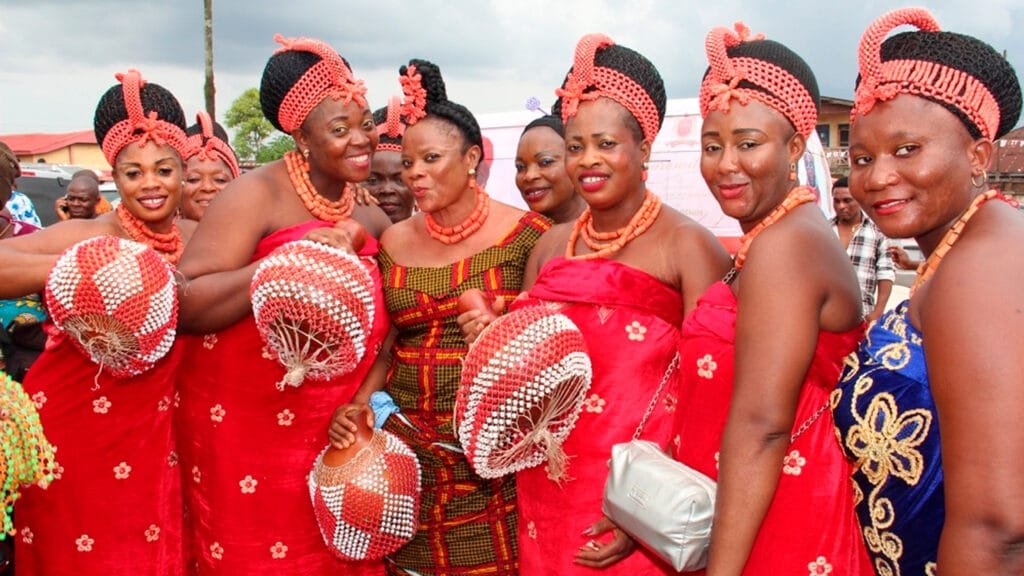The Ukuse: A Timeless Symbol of Bini Culture and Global Rhythm

The Roots of the Ukuse in Bini Culture
The Ukuse, a traditional musical instrument crafted from a calabash, holds a special place in the cultural heritage of the Bini (Edo) people of Nigeria. For centuries, it has symbolized unity, joy, and rhythm, resonating through the ages as a key element in celebrations and ceremonies. The Ukuse remains an essential feature of the royal court of the Oba of Benin, where it is used to accompany dances, songs, and rituals. Its vibrant sound brings life to royal ceremonies, serving as both a celebratory tool and a symbol of the kingdom’s rich traditions. Additionally, the Ukuse is featured in museums around the world, showcasing its historical and cultural significance.
Derived from the Edo language, the Ukuse celebrates culture and tradition, embodying the spirit of community and festivity. Often made from a calabash adorned with beads, it produces a distinctive sound when shaken or beaten against the palm. Known as Shekere by the Yorubas, Maracas in English, or Rumba shaker/Chic Chac in the Caribbean, the Ukuse is akin to maracas and symbolizes joy and rhythm in gatherings worldwide.
The Ukuse in Cultural and Social Celebrations
Beyond the royal court, the Ukuse is central to many cultural and social ceremonies in Edo State and across Nigeria. From traditional weddings and coronations to ancestral worship and community festivals, the Ukuse’s rhythmic music fosters a sense of togetherness. It is not only an instrument but a medium of storytelling and connection, deeply rooted in the fabric of Edo culture. Its presence underscores the importance of music as a unifying force in Bini society.
The Ukuse is always present in the most prominent cultural ceremonies in Edo State and Nigeria. It has inspired various cultural dance groups, such as the Benin Cultural Troupe, masquerade groups, and modern live bands. Its influence extends to contemporary musicians, including Obito Music and artists in Fuji music, demonstrating its enduring impact on Nigeria’s music scene.


Influence on Music and Dance
The Ukuse has left an indelible mark on both traditional and contemporary music and dance in Nigeria. Notable cultural and modern influences include:
-
Cultural Dance Groups: Ensembles like the Benin Cultural Troupe and various masquerade groups rely on the Ukuse to add rhythm and vibrancy to their performances.
-
Live Bands and Musicians: Modern musicians, including Obito Music and artists in Fuji music, integrate the Ukuse’s distinctive sound into their compositions, blending traditional elements with contemporary styles.
-
Masquerade Performances: In masquerade ceremonies, the Ukuse is essential in setting the tempo and enhancing the mystique of the dance.
These influences highlight the Ukuse’s versatility and enduring legacy as a cultural icon in both local and global contexts.
Crafting the Ukuse: A Tradition of Artistry
The creation of an Ukuse is a meticulous process, blending skill and artistry:
-
Calabash Selection: A mature, durable gourd is chosen for its size and sound quality.
-
Preparation: The gourd is hollowed, cleaned, and dried until it hardens.
-
Designing: Patterns are carved, scraped, or burned onto the surface to reflect cultural aesthetics.
-
Beading: Beads or shells are strung and attached around the calabash, forming a net-like structure.
-
Final Assembly: The beaded net is secured, and the instrument is tuned for optimal sound resonance.
This intricate process transforms a simple gourd into a vibrant, musical masterpiece, symbolizing the craftsmanship and cultural pride of the Bini people.
Ukuse’s Global Connections
The Ukuse’s influence extends beyond Nigeria, with similar instruments found across the globe:
-
Shekere (Yoruba, Nigeria): A comparable instrument in Yoruba culture, used in spiritual and celebratory contexts.
-
Axatse (Ewe, Ghana): Integral to Ewe music, enhancing traditional dances and rhythms.
-
Hosho (Shona, Zimbabwe): Played in storytelling and spiritual ceremonies, adding depth to Zimbabwean music.
-
Maracas (Latin America): A globally recognized percussion instrument, widely used in salsa and other Latin music genres.
These instruments share the Ukuse’s origins in gourd-based craftsmanship, reflecting the universal appeal of percussion in fostering joy and community.
A Celebration of Rhythm and Heritage
The Ukuse stands as a timeless emblem of Bini heritage, uniting past and present through its role in cultural ceremonies, modern music, and global rhythm. It continues to play a significant role in the royal court of the Oba of Benin, prominent cultural ceremonies across Edo State, and modern music and dance. It also serves as a source of inspiration for various groups, from the Benin Cultural Troupe to contemporary musicians in genres like Fuji and Afrobeat.
More than an instrument, the Ukuse celebrates culture, tradition, and artistry, fostering joy and community. Its enduring legacy spans generations and borders, inspiring musicians, dancers, and enthusiasts worldwide.
Ready to experience the legacy of the Ukuse?
Whether you’re a lover of cultural music or a modern artist seeking inspiration, the Ukuse offers a world of rhythm and history. Explore its sounds and story today!
Contact
- +234 (916) 791 6342
- contact@ukuse.com
- Lagos, Nigeria.
Support
- Ukuse (Calabash)
- Copyright © 2025 Ukuse. All rights reserved.
- Refund & Returns
- Terms of Use
- Privacy Policy

